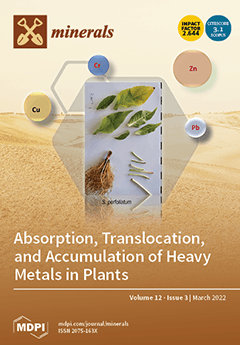In-situ recovery (ISR) has been the only technique used to extract uranium from sandstone-hosted uranium deposits in the Pliocene Goliad Sand in the Texas Coastal Plain. Water plays a crucial role throughout the ISR lifecycle of production and groundwater restoration yet neither the water use nor other environmental footprints have been well documented. The goal of this study is to examine historical records for all six ISR operations completed in the Goliad Sand to identify and quantify parameters that indicate the surface and aquifer disturbances, water use, and radon emissions. Overall, the average mine area was 0.00023 ± 0.00006 acres per pound (ac/lb) U
3O
8. The average mine pore volume was 48.9 ± 50 gal/lb U
3O
8 with a minimum affected aquifer volume of 0.51 ± 0.08 cubic feet per pound (cu ft/lb) U
3O
8. An average of 258 ± 40 gallons (gal) of fluid were disposed per pound (lb) U
3O
8, with an average of 169 ± 26 gal/lb U
3O
8 attributed to restoration and 89 ± 36 gal/lb U
3O
8 attributed to the uranium production phase. The average radon emitted was 1.06 × 10
−3 ± 7.4 × 10
−4 curies per pound (Ci/lb) U
3O
8. Goodness-of-fit (
R2) values are ≥0.79 for linear regressions of the amount of uranium produced versus mine area, mine pore volumes, mine aquifer volumes, water pumped, and total water disposed. The
R2 value for radon emitted was 0.68. However, the water disposed only during the uranium production phase is more strongly correlated to the number of production days (
R2 = 0.96) than to uranium production (
R2 = 0.84), whereas the volume of water disposed during restoration is more strongly correlated to the “pore volume” (
R2 = 0.97) than to uranium production (
R2 = 0.90). Pore volume is an industry term used to describe the amount of fluid circulated through the aquifer during the uranium production period and stipulated in bond agreements in order to satisfy groundwater restoration requirements. Models constructed in this study can be used to estimate probable water use and the extent of surface and aquifer disturbances associated with ISR-amenable undiscovered uranium resources in the Goliad Sand. The historical perspective offered by the data compiled and correlations may prove useful to both industry and regulators.
Full article





